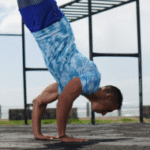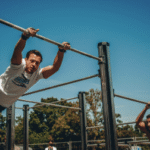Setting SMART Goals with Your Personal Calisthenics Trainer
The Power of SMART Goals in Calisthenics
SMART is an acronym for Specific, Measurable, Achievable, Relevant, and Time-bound. Applying this framework to your calisthenics journey with your private coach brings clarity, focus, and a structured approach to what might otherwise feel like an overwhelming pursuit of body mastery. It’s the difference between saying “I want to get strong” and “I will perform 5 unassisted pull-ups by December 31, 2025.”
—
Why SMART Goals are Essential for Calisthenics Success
Beyond generic fitness, SMART goals are vital for calisthenics because:
Clarity and Focus: Calisthenics involves complex skills. SMART goals break down these intimidating feats into manageable steps, providing a clear target. This sharpens your training focus.
Motivation and Accountability: A well-defined goal is inherently more motivating. Knowing you’re working towards something concrete keeps you engaged and provides a clear benchmark for success. Your coach holds you accountable to these specific targets.
Measurable Progress: Calisthenics requires precise progressions. SMART goals provide objective metrics to track your advancement (e.g., number of seconds held, number of repetitions, successful completion of a specific variation), proving your efforts are paying off.
Realistic Expectations: They force a realistic assessment of what’s possible given your current fitness level, available time, resources, and potential limitations. This prevents frustration and burnout by setting achievable targets.
Effective Program Design: Your private calisthenics coach uses your SMART goals as the blueprint for designing your personalized program, ensuring every drill, exercise, and periodization phase is purposeful and contributes directly to your objectives.
Injury Prevention: By setting achievable, time-bound goals with expert guidance, you’re less likely to rush progressions and risk injury.
—
The Role of Your Personal Calisthenics Trainer in Setting SMART Goals
Your private calisthenics trainer in Houston is your expert guide in setting and achieving SMART goals, leveraging their specialized knowledge and coaching skills:
Expert Guidance: They possess deep knowledge of calisthenics progressions, human anatomy, biomechanics, and training principles. This allows them to help you formulate goals that are truly Achievable (realistic for your body and current abilities) and Relevant (aligning with true calisthenics mastery). They can accurately assess your current abilities and suggest appropriate targets you might not have known were possible.
Assessment-Based Goal Setting: The trainer’s initial comprehensive assessment (strength, mobility, injury history, movement patterns) provides the objective data needed to make your goals truly Specific and Measurable . For instance, if your goal is a handstand, they’ll assess your shoulder mobility and core strength to set an appropriate starting point and timeframe.
Breaking Down Big Goals: They excel at taking ambitious long-term goals (e.g., a full planche) and breaking them down into smaller, sequential, and highly specific SMART micro-goals that are easier to track, celebrate, and stay motivated by.
Accountability Partner: The coach acts as a consistent accountability partner, regularly reviewing your progress against your Time-bound goals. This provides an external motivator, especially crucial when self-motivation wanes.
Dynamic Adjustment: As your body adapts and you progress, or if you encounter unexpected setbacks (e.g., a minor injury, a busy period in your Houston life affecting recovery), the coach can help you dynamically adjust your SMART goals to keep them realistic, motivating, and challenging.
Client Education: They educate you on the “why” behind your goals and how each training session contributes to reaching them, fostering a deeper and commitment to your overall program.
—
Setting SMART Goals in Practice: A Detailed Breakdown for Calisthenics
Let’s apply the SMART framework specifically to calisthenics goals:
S – Specific:
What it means: Your goal should be clear, unambiguous, and well-defined. Avoid vague statements like “get stronger” or “look better.”
How to apply in Calisthenics: Define the exact skill, movement, or physical attribute you want to achieve.
Examples: “Hold a freestanding handstand for 10 seconds with a straight body line,” not just “do a handstand.” “Perform 5 unassisted muscle-ups with proper form,” not just “do more pull-ups.” “Hold a tuck planche for 10 seconds with perfect form and straight arms.”
M – Measurable:
What it means: You need concrete criteria to track progress and objectively know when you’ve achieved your goal.
How to apply in Calisthenics: Calisthenics lends itself well to precise measurement.
Examples:
Repetitions/Sets: “Perform 10 perfect incline push-ups (at a 45-degree angle).” “Complete 3 sets of 8 ring dips .”
Hold Times: “Hold an L-sit for 20 seconds .” “Maintain a wall handstand for 60 seconds .”
Progression Level: “Achieve an unassisted pull-up” (a specific step from band-assisted). “Transition from a tuck planche to an advanced tuck planche.”
Distance/Time (for conditioning): “Complete a 5-minute calisthenics circuit without rest.”
Mobility Metrics: “Increase shoulder flexion by 10 degrees (measured with goniometer or specific test).”
Role of Coach: Your trainer will meticulously track these metrics in your training log or app, providing objective proof of your progress.
A – Achievable:
What it means: The goal should be realistic and attainable, yet challenging enough to motivate you. It considers your current fitness level, available time, resources, and potential physical limitations.
How to apply in Calisthenics: This is where the coach’s expertise is paramount.
A beginner aiming for a 60-second freestanding handstand in one month is unrealistic. A coach, after assessment, would guide them to a more achievable initial goal, like a 10-second wall handstand or a 5-second freestanding hold in a longer timeframe.
The coach will assess your current strength, mobility, and injury history (e.g., from an old sports injury common in Houston) to ensure the goal is safe and physically possible within the suggested timeframe.
R – Relevant:
What it means: The goal should align with your broader aspirations, interests, and overall lifestyle. It should genuinely matter to you and contribute to your overall well-being.
How to apply in Calisthenics:
Why do you want to achieve that handstand? Is it for personal achievement, cross-training for a specific sport, or just to feel more in control of your body?
Does achieving this calisthenics skill genuinely enhance your quality of life or fit into your functional needs (e.g., improved core strength for long commutes in Houston traffic, better posture for desk jobs)?
Role of Coach: Helps you connect the calisthenics goal to your deeper “why,” ensuring sustained motivation and commitment.
T – Time-bound:
What it means: Every SMART goal needs a deadline or a specific timeframe for completion. This creates urgency and provides a target date for focused effort.
How to apply in Calisthenics:
Examples: “By [specific date],” “within [X] months,” “by the end of the year.”
“Hold a freestanding handstand for 10 seconds with a straight body line by December 31, 2025 .”
“Perform 5 unassisted pull-ups with good form within 3 months .”
“Achieve a 5-second tuck planche by March 31, 2026 .”
Role of Coach: Uses this timeframe for periodization planning, creates clear checkpoints for progress review, and provides a motivational deadline.
—
Integrating SMART Goals into Your Training Journey (The Coach’s Process)
- Initial Consultation: The first meeting with your Houston-based coach is where you’ll discuss your aspirations, and collaboratively begin to formulate your initial SMART goals.
- Comprehensive Assessment: The coach’s physical assessment provides the objective data to refine these goals, ensuring they are truly Achievable and Relevant .
- Program Design: Your personalized calisthenics program is then meticulously built specifically to lead you toward these SMART goals, with periodization phases designed to target prerequisites and optimize progress.
- Regular Review: Your coach will regularly review your progress against your SMART goals, typically in weekly or monthly check-ins, using recorded data.
- Dynamic Adjustment: Goals can be adjusted if needed (e.g., if you hit a plateau, get injured, or exceed expectations), ensuring they remain Relevant and Achievable throughout your journey.
Houston Context: Making SMART Choices Here
Houston’s dynamic environment, with its busy professional lifestyles and diverse population, makes the clarity and focus provided by SMART goals particularly valuable. Access to specialized calisthenics coaches in various parts of the city (from studios in Montrose to parks in Memorial) means you can find the expertise to guide you towards these precise objectives. Whether your goal is a handstand in Discovery Green or a muscle-up at a local calisthenics park, a SMART approach is your best bet for success.
—
Conclusion: The Roadmap to Calisthenics Mastery
Setting SMART goals in collaboration with your personal calisthenics trainer is the definitive roadmap to achieving true mastery. By making your aspirations Specific, Measurable, Achievable, Relevant, and Time-bound, you provide your coach with the precise blueprint needed to design an effective program and keep you accountable. This strategic approach transforms vague intentions into a clear, accelerated, and highly rewarding journey of physical and mental transformation in Houston.

Setting SMART Goals with Your Personal Calisthenics Trainer
Route
Calisthenics Gym Houston Functional Bodyweight Training
Secondary phone: (346) 483-3195
Email: info@calisthenicsclubhouston.com
URL: https://calisthenicsclubhouston.com/
Monday 6:00 AM - 7:00 PM Tuesday 6:00 AM - 7:00 PM Wednesday 6:00 AM - 7:00 PM Thursday 6:00 AM - 7:00 PM Friday 12:00 PM - 6:30 PM Saturday 9:45 AM - 12:00 PM Sunday 3:00 PM - 5:00 PM





